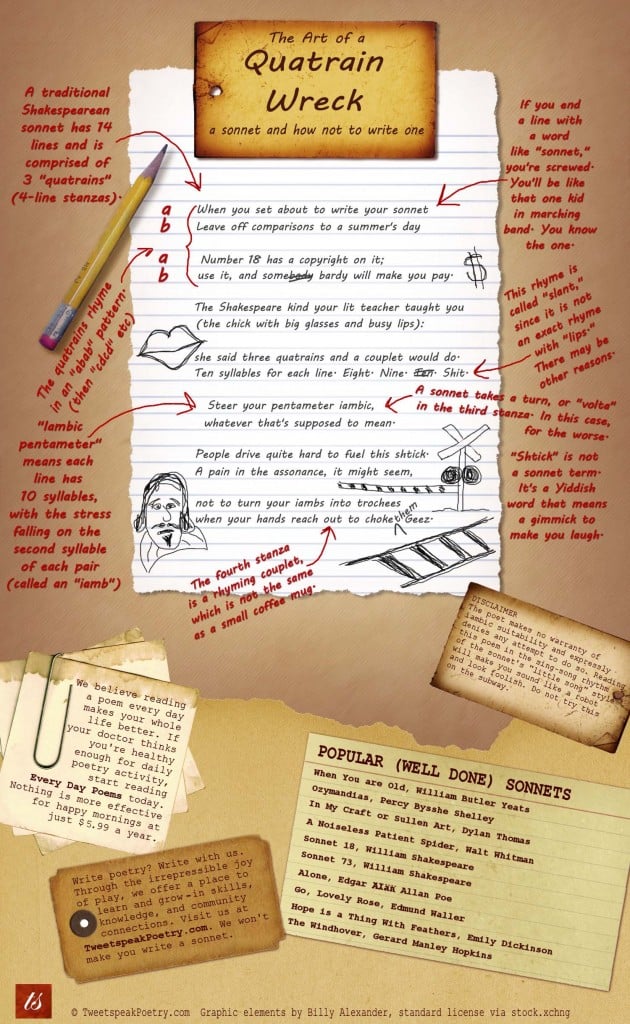
Writing a sonnet is a rare feat, and in my experience not on the average bucket list. However, if you’re hankering after fame and fortune (ala Shakespeare) or even just have time on your hands and thrill at the challenge of writing complicated poetry, you may find these instructions useful. While Shakespeare may have made the sonnet famous, it goes back much further to the Court of the Holy Roman Emperor, Frederick II. Sonnets were first written in 13th century Sicily. Believe it or not, the town of Palermo actually had a School for Poets, the members of which spread the art of sonnet writing.
Did you know that in Italian, “sonnet” means little song? The most famous sonneteer was Petrarch, but even the great artist, Michelangelo, tried his hand at writing sonnets with great success.
As you can see, the rules governing sonnet writing are stringent. Many will find that writing to such strict regulations overstretches their poetic abilities. Not only must you rhyme alternating lines, but you must also stick to the regulated iambic beat of the stanzas. Unlike Shakespeare, not all famous poets used this restrictive form of poetry to sing odes of love to their romantic interests. The subjects of these little songs are as varied as their writers.
Sonnets sound like hard work to me, yet many poets everywhere, from England to the United States to Canada have chosen to write sonnets. Of course, don’t worry if jumping into something as tricky as a sonnet feels a little intimidating. You can always try starting with something a little easier! There are always other ways to get creative.




